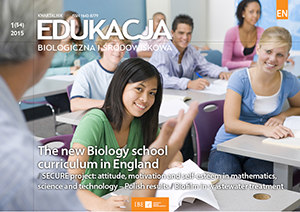Attitude, motivation and self-esteem... in mathematics, science and technology
researched by the SECURE project – Polish results against the background in Europe
Attitude, motivation and self-esteem... in mathematics, science and technology
researched by the SECURE project – Polish results against the background in Europe
Author(s): Dagmara Sokołowska, Job De Meyere, Mateusz Wojtaszek, Witold Zawadzki, Grzegorz BrzezinkaSubject(s): Education, School education, Educational Psychology, Sociology of Education
Published by: Instytut Badań Edukacyjnych
Keywords: mathematics; science and technology; curriculum; primary education; lower secondary education; attitude;
Summary/Abstract: The SECURE project was founded under the 7th Framework Programme to provide research results of current mathematics, science and technology (MST) curricula for pupils aged 5, 8, 11 and 13 in ten EU member states, including Poland. The curricula have been examined throughout three different representations, as they are intended by the authorities (in legal documents), implemented by the teachers and perceived by the learners. The research framework at all three levels has been constructed upon the curriculum spider web (van den Akker, 2003) with addition of item “attitude”. The study involved altogether almost 9000 pupils, 1500 teachers and 600 schools in consortium member states. In this contribution a part of research concerning the average results on (1) learners’ attitude towards MST school subjects, (2) influence of topics, activities and teachers on liking the MST subjects by pupils, (3) learners’ self-esteem in MST subjects and (4) their opinion on the easiness of MST subjects are presented. In particular, we focus on Polish results (regions of Krakow City and Krakow County) and compare them with the European average. The study shows a substantial drop in all the variables measured, mostly evident between ages 8 and 11. In general the trends across ages and subjects in Poland are similar to those in Europe with a few exceptions indicated in the paper
Journal: Edukacja Biologiczna i Środowiskowa
- Issue Year: 2015
- Issue No: 1
- Page Range: 27-38
- Page Count: 12
- Language: English
- Content File-PDF

